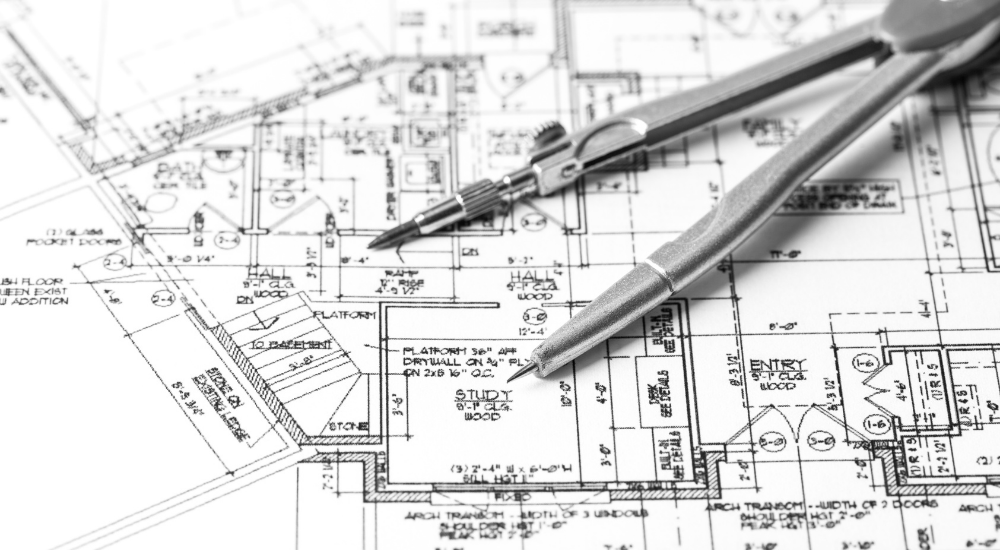Architect Career Path: Competencies, Training, and Growth Guide
Architect Career Path: Competencies, Training, and Growth Guide
Blog Article
Recognizing the Diverse Profession Paths Available for Aspiring Architect
As a hopeful Architect, you have a globe of career courses waiting for you. Whether you're drawn to traditional design or the nuances of lasting style, there's a niche that lines up with your interests.
Traditional Style: Designing Structures and buildings
Traditional architecture focuses on developing buildings and structures that blend functionality with visual allure. Your layouts can mirror cultural heritage, showcasing regional customs while meeting modern requirements.
You'll develop skills in composing, model-making, and website evaluation, permitting you to picture and interact your ideas efficiently. Engaging with clients, you'll need to recognize their vision and convert it into possible styles.
Furthermore, constructing codes and sustainability techniques are crucial in your job, guaranteeing your structures are environmentally pleasant and risk-free. As you grow in your job, you'll discover opportunities in domestic, business, or even restoration tasks, each offering special challenges. Welcoming traditional architecture leads the way for a meeting occupation that admires the past while forming the future.
Urban Planning: Shaping Areas and Public Spaces
As a hopeful Architect, you can play an essential function as an urban coordinator, changing how areas communicate and work. By employing neighborhood engagement methods, you'll guarantee that residents have a voice fit their environment. And also, incorporating lasting design concepts will aid create areas that not just fulfill today's demands but additionally secure the future.
Role of Urban Planners
While lots of could consider architects as the single dreamers behind buildings, metropolitan organizers play an essential function in forming the broader landscape of communities and public areas. They evaluate land usage, zoning regulations, and community needs to produce lasting atmospheres that improve lifestyle. By teaming up with various stakeholders, you'll aid make parks, transport systems, and suburbs that advertise social interaction and availability. Urban organizers additionally concentrate on ecological considerations, guaranteeing that advancements integrate environment-friendly areas and support biodiversity. Your expertise in spatial design and community dynamics enables you to envision future growth while preserving social heritage. In this important function, you'll directly influence how people experience their surroundings, making every project an opportunity for positive change.
Neighborhood Engagement Approaches
Reliable neighborhood engagement approaches are crucial for metropolitan planners to assure that the voices of citizens are heard and valued in the preparation process. To foster purposeful dialogue, you should focus on open discussion forums and workshops where area members can share their concepts and issues. Usage studies and social media sites to reach a broader audience, guaranteeing varied perspectives are consisted of. Working together with neighborhood companies can boost trust fund and facilitate much deeper connections. It is essential to offer clear details about suggested tasks and decision-making processes, enabling homeowners to feel enlightened and empowered. By actively paying attention and including responses, you'll create areas that reflect the area's needs, inevitably resulting in even more lasting and effective city settings. Accept transparency and constant discussion for long-term impact.
Lasting Layout Concepts
When developing urban spaces, incorporating sustainable layout concepts is important for producing environments that grow both environmentally and socially. Consider incorporating eco-friendly spaces, like parks and yards, to boost biodiversity and enhance air quality.
Creating with water conservation in mind is likewise key-- consider rainfall gardens and absorptive surfaces to handle stormwater. Involving area members throughout the planning procedure guarantees that the rooms you create fulfill their needs and urge social interaction. By welcoming these concepts, you'll add to lively, lasting metropolitan landscapes that profit everybody.

Landscape Style: Producing Sustainable Exterior Settings
As you check out landscape architecture, you'll uncover necessary style principles that produce useful and stunning outdoor areas. Sustainable techniques play an essential duty in making certain these atmospheres flourish while decreasing ecological impact. And also, you'll find a selection of occupation opportunities that permit you to make an actual difference in how people communicate with nature.
Layout Concepts in Landscape
Understanding layout principles in landscape style is crucial for producing sustainable exterior environments that harmonize with nature. You'll need to contemplate components like equilibrium, percentage, and range to guarantee your styles feel cohesive and welcoming. Furthermore, pay interest to seasonal modifications, designing with materials that match the surroundings year-round.
Lasting Practices Overview
Sustainable methods in landscape design not only concentrate on aesthetics yet likewise prioritize ecological wellness and resource conservation. You can design rooms that promote soil health, such as practicing and using natural materials permaculture principles. Inevitably, these methods guarantee your styles profit both people and the atmosphere for years to come.
Career Opportunities Expedition
With a strong foundation in lasting techniques, landscape design provides a variety of occupation courses that allow you to make a meaningful influence on the atmosphere. You can function as a landscape designer, producing cosmetically pleasing and practical exterior spaces, or focus on eco-friendly restoration, assisting to revive damaged ecological communities. Urban coordinators frequently collaborate with landscape engineers to produce environment-friendly spaces in metropolitan setups, boosting city livability. If you're passionate concerning education, consider coming to be a landscape architecture instructor, inspiring future generations. Furthermore, you might deal with nonprofits concentrated on environmental sustainability or take part in research to innovate new practices. Each course not just forms stunning environments yet likewise promotes a healthier earth for future generations.
Lasting Layout: Concentrating on Eco-Friendly Practices
As you discover your career in architecture, embracing environmentally friendly techniques can establish you apart in an affordable area. Sustainable design concentrates on producing structures that lessen environmental influence while improving occupant health. By integrating eco-friendly products, energy-efficient systems, and lasting structure techniques, you'll contribute to a greener future.
Begin by acquiring understanding of eco-friendly accreditations like LEED or BREEAM, which can strengthen your credentials. Consider how natural light, air flow, and thermal efficiency can optimize design. Work together with designers and ecological specialists to introduce solutions that minimize waste and conserve resources.
Do not forget the relevance of community participation-- interesting regional stakeholders can motivate layouts that integrate with the environment. As clients progressively focus on sustainability, your experience in environment-friendly methods will not only Read Full Article bring in projects but additionally fulfill your passion for liable architecture. Embrace this vital element of the career, and view your job flourish.
Historic Preservation: Protecting and Recovering Social Heritage
While you commence on your architectural trip, take into consideration the vital role of historical preservation in maintaining our cultural heritage. This area concentrates on the security and restoration of significant structures, sites, and structures that inform the tales of our past. By taking part in historic preservation, you'll assist protect the building tradition that forms area identity.
As a historical preservation Architect, you'll examine historic relevance and evaluate the condition of frameworks. You'll function very closely with chroniclers and preservationists to ensure authentic restoration methods are used. This job path allows you to blend creativity with study, enabling you to create options that appreciate initial products and workmanship.
Your job not only adds to sustainability by reusing existing buildings yet likewise promotes a sense of satisfaction within neighborhoods. Accepting this course will certainly assist you come to be a guardian of history, maintaining the tales and aesthetics that improve our lives.
Inside Architecture: Enhancing Indoor Spaces
Historical preservation and indoor style both share a commitment to boosting the developed atmosphere, however they concentrate on various facets. While historical conservation highlights preserving a framework's historic and cultural worth, interior style nos in on maximizing interior rooms for performance and aesthetics.
As a hopeful Architect, you'll find that indoor style allows you to blend imagination with technological skills. You'll design spaces that not only look good yet additionally promote comfort and performance. This area includes comprehending exactly how light, color, and materials communicate within a room, affecting state of mind and use.
You'll deal with various projects, from residential homes to industrial workplaces, guaranteeing that each environment meets the requirements of its residents. By focusing on user experience, you can transform interiors right into motivating and useful spaces, making a considerable effect on exactly how people communicate with their environments. Embrace the opportunity to improve indoor settings and form the method individuals work and live.
Industrial Design: Combining Performance With Looks
Industrial design plays an essential function in creating products that seamlessly blend aesthetics with capability, guaranteeing that what you make use of everyday is not just aesthetically appealing however also practical. As an aspiring Architect, you might engage yourself in this area, concentrating on creating whatever from furnishings to customer electronics. Your job includes understanding individual demands, products, and producing procedures, enabling you to create ingenious options that improve daily experiences.
In industrial design, you'll often collaborate with marketing experts, suppliers, and designers, guaranteeing that your styles are not just stunning however additionally practical. This profession course uses a vibrant atmosphere where imagination fulfills usefulness, making it a fulfilling choice for engineers interested in shaping the items of tomorrow.
Frequently Asked Inquiries
What Educational Credentials Do I Need to End Up Being an Engineer?
To come to be an engineer, you'll require an expert degree in design, generally a Bachelor's or Master's. Furthermore, you'll need to complete a teaching fellowship and pass the Architect Registration Evaluation to exercise lawfully.
Exist Accreditation Demands for Different Building Profession Paths?
Yes, there're accreditation needs for various architectural courses. Architect. You'll require to pass examinations, full teaching fellowships, and sometimes seek specialized training, relying on your selected focus, like landscape style, metropolitan layout, or historical preservation
What Software Abilities Are Essential for Designers Today?

How Can I Gain Practical Experience While Researching Architecture?
You can acquire practical experience by interning at building firms, taking part in layout competitors, volunteering for neighborhood projects, or teaming up with schoolmates on real-world jobs. These chances improve your abilities and construct important connections the original source in the market.
What Job Opportunities Exist Outdoors Traditional Architecture Firms?
You can explore various task possibilities outside standard architecture companies, like city preparation, indoor style, landscape architecture, construction management, genuine estate advancement, or perhaps functions in sustainability consulting. Each deals unique obstacles and benefits.
Whether you're drawn to conventional design or the subtleties of lasting design, there's a specific niche that straightens with your rate of interests.When designing city rooms, incorporating sustainable layout principles is try this crucial for producing settings that prosper both ecologically and socially.As you explore landscape architecture, you'll find necessary style concepts that develop useful and gorgeous exterior areas.Comprehending design concepts in landscape architecture is crucial for developing lasting outside settings that balance with nature.In commercial layout, you'll usually work together with designers, marketing experts, and suppliers, making certain that your layouts are not just gorgeous yet also viable.
Report this page